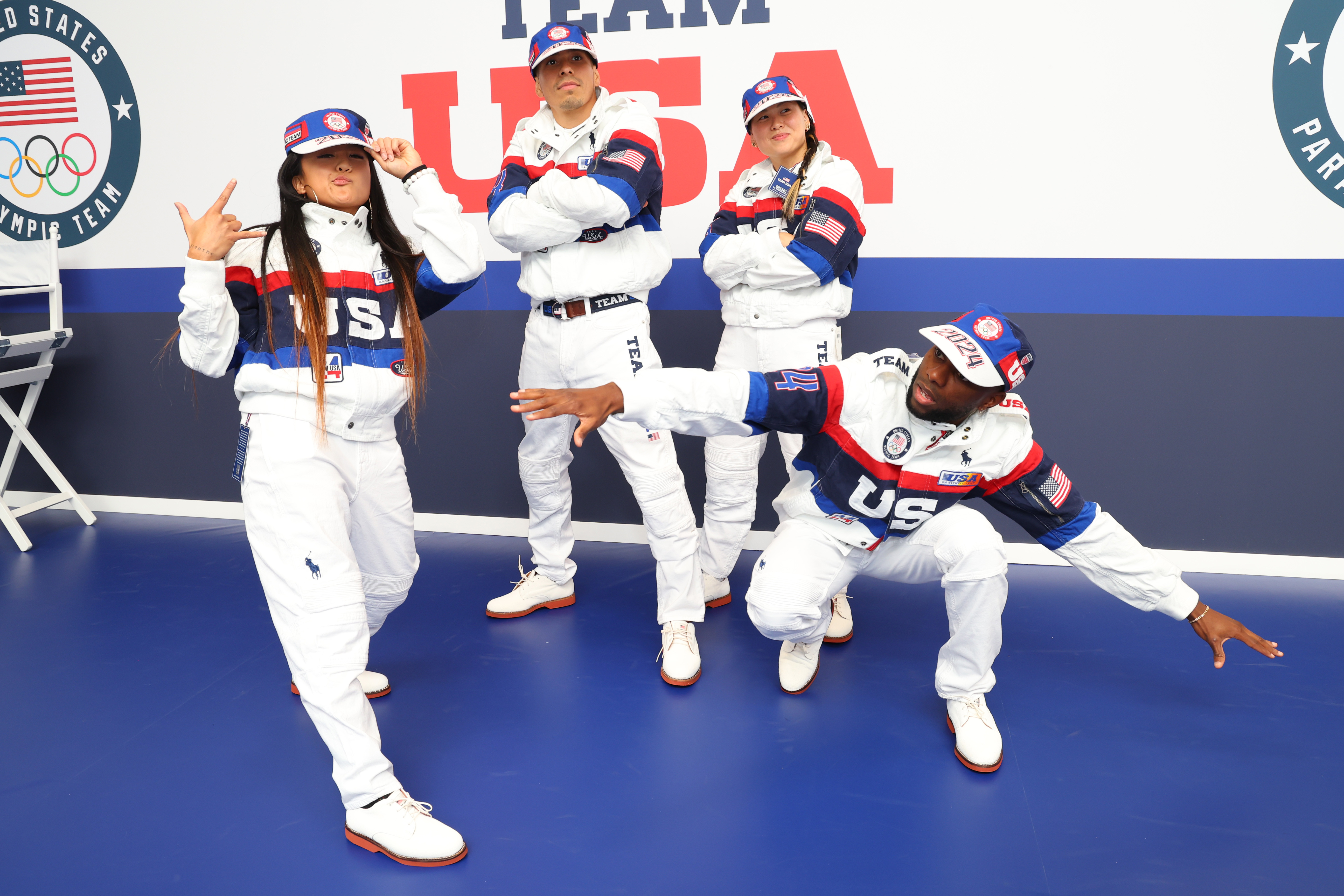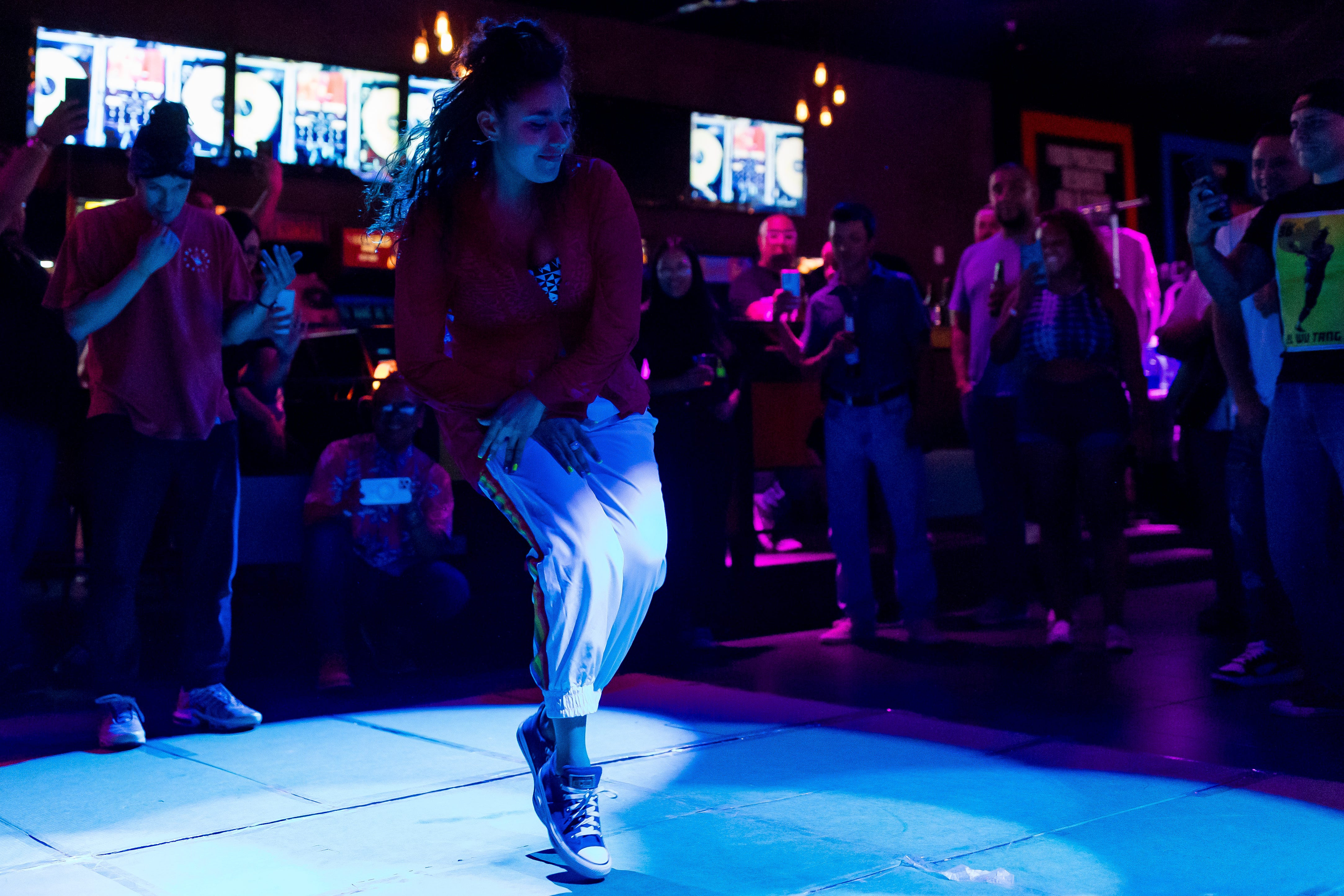Breaking’s highly anticipated Olympic debut in Paris sparked global conversations, moving beyond athletic prowess to touch upon cultural representation and the very soul of hip-hop. From an Australian b-girl’s meme-generating moves to a Lithuanian dancer’s silver medal win shadowed by a durag debate, the inaugural Olympic breaking event was anything but quiet. While some questioned if the essence of this dynamic art form truly resonated on the Olympic stage, the spotlight undeniably shone on individuals like the silver-medalist from Lithuania, thrusting discussions of cultural heritage and evolution into the global arena.
Rachael Gunn, known as “b-girl Raygun,” an Australian professor, inadvertently became an early talking point. Her performances, while creative, didn’t align with the expected technical skills of Olympic-level breaking, leading to viral clips and mixed reactions online. Gunn herself acknowledged this, stating, “I was never going to beat these girls on what they do best — their power moves. What I bring is creativity.” This divergence in styles immediately highlighted the diverse interpretations of breaking within the competitive sphere.

However, it was the Lithuanian b-girl Nicka, legally Dominika Banevič, who found herself at the center of a more profound cultural discussion. Securing a silver medal, a significant achievement for Lithuania in Olympic breaking, Nicka’s accomplishment was quickly interwoven with questions about her choice of attire – a durag. Throughout her battles, Nicka sported this headwear, an item deeply rooted in Black culture and history.
The durag, originally used by enslaved Africans for hair protection, evolved into a symbol of Black pride and a fashion statement within hip-hop culture. Its adoption by individuals outside of Black communities, particularly white individuals, often raises concerns of cultural appropriation. Actor Kevin Fredericks voiced this sentiment regarding Banevič, commenting on Instagram about the “weird” sight of someone wearing a durag who doesn’t require it for hair protection or styling purposes inherent to Black hair.
Despite the controversy, the 17-year-old Lithuanian breaker, Nicka, stood firm in her respect for the origins of breaking. She openly credited the pioneers of the 1970s Bronx, the “OGs” of hip-hop, for laying the foundation of her dance and the entire breaking discipline. “It’s a huge responsibility to represent and raise the bar every time for breaking because they did an amazing job. Big respect for the OGs and the pioneers that invented all those moves. Without them, it wouldn’t be possible,” Nicka stated. Her words underscored a clear appreciation for the cultural heritage from which breaking emerged, even as she navigated the complexities of representing it on a global, Olympic stage.
The broader context of breaking’s Olympic introduction reveals inherent tensions. Organizers aimed to broaden breaking’s appeal, introducing it to a mainstream audience, many unfamiliar with its cultural nuances. This ambition, however, sparked anxieties within the breaking community. Concerns arose about commercialization diluting the art form’s essence and the imposition of rigid Olympic judging structures potentially overshadowing the spontaneous, community-centric spirit of breaking rooted in street battles, cyphers, and block parties. Hip-hop’s genesis as a form of expression and resilience within Black and Brown communities in the Bronx adds layers of historical and social significance to these concerns.
Further highlighting these tensions, refugee breaker Manizha Talash, “b-girl Talash,” was disqualified for making a political statement while competing. Donning a “Free Afghan Women” cape, Talash used her platform to advocate, a move that clashed with Olympic regulations against political displays. This incident, along with the reactions to both Gunn and Banevič, underscores the delicate balance between individual expression, cultural representation, and the framework of Olympic competition that breaking now inhabits.

Despite these debates, the involvement of hip-hop icons like Snoop Dogg and ICE T injected authenticity and excitement into the Olympic breaking event. Snoop Dogg’s appearance and pronouncements about understanding hip-hop’s true essence, alongside ICE T’s enthusiasm, served to bridge the gap between breaking’s roots and its Olympic iteration. However, even American b-girls, Logistx and Sunny Choi, acknowledged the shifts occurring within the breaking scene due to the Olympic platform. Choi noted, “Breaking for the Olympics has changed the way that some people are dancing,” voicing a common sentiment about the evolution, and perhaps dilution, of original styles.
Ultimately, the debut of breaking at the Olympics, marked by the Lithuanian Break Dancer’s silver medal and the ensuing durag debate, served as a powerful catalyst. It prompted crucial conversations about cultural appropriation, the preservation of hip-hop’s foundational values, and the future trajectory of breaking as it navigates the global stage of the Olympic Games. As the b-boys prepared to compete, the inaugural b-girls competition left a lasting impression, raising vital questions about representation and respect within this dynamic and evolving art form.
